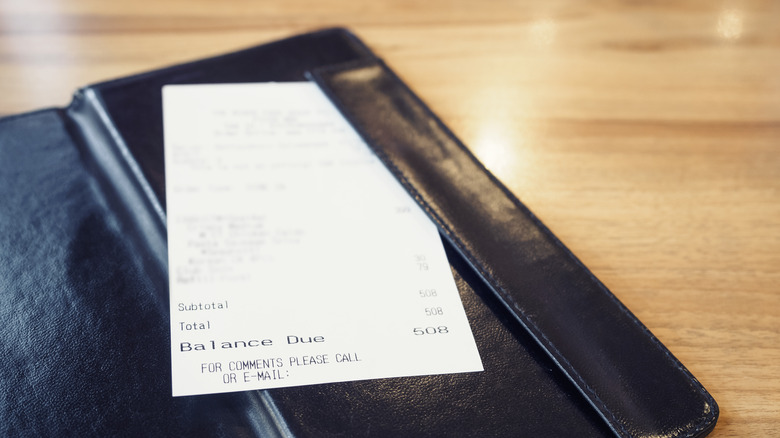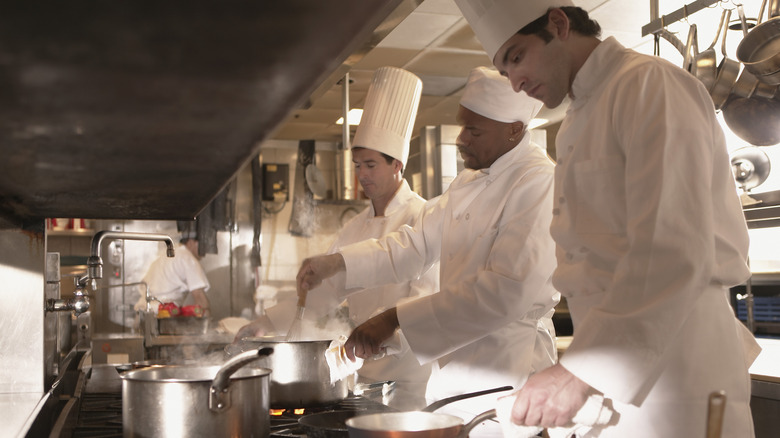Service Fees Bring The Back Of House To The Forefront
You're out at a restaurant, finishing up your meal. The check comes. You pull out your wallet and glance down at the bill. You take in the line items from your meal but notice that there is something else on the bill you don't recognize — a service charge.
A service charge, also sometimes called an automatic gratuity, is something that some restaurants work into their business model. Per Vox, it frequently ranges from 3-20% of the total bill and is a required charge for eating food at the establishment. Not all restaurants do this, but for many customers, it can be hard to know where this money is going.
A restaurant that charges service fees might have introduced that practice for several different purposes, such as covering credit card fees. But many restaurants have adopted service charges as a way to increase wages for their employees, specifically the back-of-house staff who don't traditionally receive a cut of the tip pool. The service charge at the end of your bill can serve an important purpose, and that is addressing historical inequity amongst restaurant workers.
FOH and BOH
In many sit-down restaurants, the staff is generally divided into two groups: front of house (FOH) and back of house (BOH). Front-of-house employees are servers, bartenders, hosts, and any other customer-facing role. Back-of-house employees include the chefs, cooks, and dishwashers in the kitchen. All of these roles are equally important but historically do not earn the same pay. On a busy night in a nice restaurant, front-of-house employees can increase their take-home income substantially by making tips, while back-of-house employees often do not get cut into the tip pool, and are limited to an hourly wage.
The practice of tipping, in general, has a history rooted in inequity, and today, many restaurants are trying different approaches to address the disturbing inequalities. One of those ways involves including a service charge or automatic gratuity. The idea is to build higher wages for the entire staff into the price of a meal.
Is a service charge a tip?
While service charges or automatic gratuities are often geared toward addressing tipping inequity, they are usually counted as part of the employee's actual wages. How service charges are handled will differ from restaurant to restaurant. For things labeled "service charge," especially if they are on the lower end, it is polite to tip on top of the charge, though you might not have to leave as much of a gratuity as at a restaurant that has no built-in charge.
Some restaurants, however, factor in an automatic gratuity so as to eliminate the practice of tipping altogether. This is why it's important to get some clarity on what the service charge at each restaurant is actually for. If it won't go back to the employees, you should tip as normal. If you are ever unsure of where the service charge is going, it's okay to ask — that way, you can ensure that you are still tipping appropriately. These fees can be great for restaurant employees, but you have to make sure that is where the money is going first.
For many people who love going out to eat, service charges or automatic gratuities are becoming commonplace, but they can be confusing without context. Still, that little line item on your bill isn't for nothing. It can help ensure that the people who prepare your delicious meal earn competitive wages.


